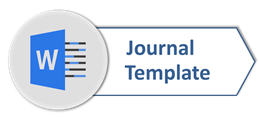Undergraduates’ Awareness of English Irregular Verbs
Abstract
The objectives of this research were to find out undergraduates’ awareness of English irregular verbs and to find out what errors that the students made in using the irregular verbs. This research was conducted at University of Teknokrat Indonesia. The population of this research was the first semester students. There were 30 university students who were chosen as the samples. They were all S1 English Literature students. The data of this research were collected through a written task. The task was designed to measure the students’ ability in using irregular verbs in sentences telling about past events. There were 140 irregular verbs tested to the students. The result of the research showed that the undergraduates’ awareness of English irregular verbs is low; 22 (73.3%) out 30 students made errors in using English irregular verbs. The errors varied into three types; using the rule of regular verbs for irregular verbs, using simple form verbs for past events, and creating new words which did not exist in English vocabulary. The highest number of error was placed by applying the rule of regular verbs for irregular verbs with 14 incorrect verbs (53.8%), the second position was placed by using simple form verbs for past events with 9 incorrect verbs (34.6%), and the third position was placed by creating new words which did not exist in English vocabulary with 3 incorrect verbs (11.5%). The results of this study indicate that students in which English is a foreign language might still have insufficient English vocabulary when they come to higher schools.
Keywords: Foreign language, error, irregular verbFull Text:
PDFReferences
Al-Khresheh. 2016. A Review Study of Error Analysis Theory. International Journal of Humanities and Social Science Research. Volume 2, Page 49-59.
Alqahtani. 2015. The Importance of Vocabulary in Language Learning and How to Be Taught. International Journal of Teaching and Education. Volume 3, No. 3.
Ciesielkiewicz & Márquez. 2015. Error Analysis and Its Relevance to Teaching ESL Composition. International Journal of Linguistics. Volume 7, No. 5.
Dulay, et al. 1982. Language Two. New York: Oxford University Press.
Fang & Xue-mei. 2007. Error Analysis and the EFL Classroom Teaching. US-China Education Review. Volume 4, No. 9.
Gunjal. 2012. A Study of English Vocabulary Achievement of 9th Std. students of Ahwa Taluka. International Multidisciplinary e-Journal. Volume 1, Issue 5.
Gurtubay. 2009. Lexical Error Analysis in the Written Production of Students of English as a Second Language: A Plot Study. ES. Volume 30, Page 129-141.
Hasyim. 2002. Error Analysis in the Teaching of English. Puslit Petra Journal. Volume 4, No. 1.
Jayasundara & Premarathna. 2011. A Linguistics Analysis on Errors Committed in English by Undergraduates. International Journal of Scientific and Research Publications. Volume 1. Issue 1.
Khansir. 2012. Error Analysis and Second Language Acquisition. Theory and Practice in Language Studies. Volume 2, No. 5.
Kotsyuk. 2015. English Language Error Analysis of the Written Texts Produced by Ukrainian Learners: Data Collection. Cognitive Studies. Volume 15, Page 389-395.
Richards, Jack. 1971. Error Analysis and Second Language Strategies. Department of Linguistics, University Laval: Quebec, Canada.
Rini. 2014. The Error Analysis on the Students of English Department Speaking Scripts. Register. Volume 7, No. 2.
Yufrizal. 2008. An Introduction to Second Language Acquisition. Bandung. Pustaka Reka Cipta.
DOI: https://doi.org/10.33365/ts.v16i2.143
Refbacks
- There are currently no refbacks.
Copyright (c) 2018 TEKNOSASTIK
Teknosastik: Jurnal Bahasa dan Sastra
Publisher: Universitas Teknokrat Indonesia
Address: Zainal Abidin Pagaralam Street 9-11, Bandar Lampung, Indonesia
Website: https://ejurnal.teknokrat.ac.id/index.php/teknosastik/index

Creative Commons Attribution-ShareAlike 4.0 International License






